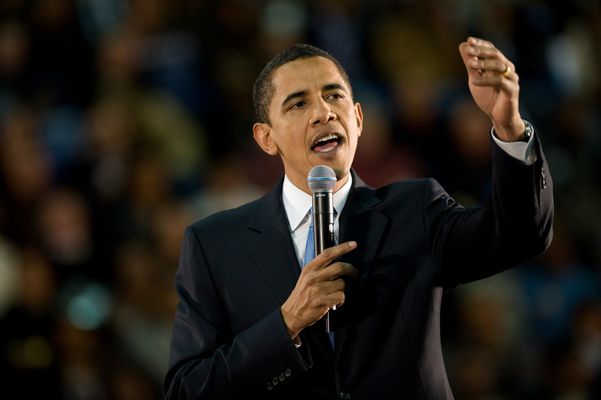5.2.3
Running as Presidential Candidate
The Campaign for Presidential Candidacy
The Campaign for Presidential Candidacy
In 2007, Obama ran against Hillary Clinton to become the Presidential Candidate for the Democratic Party.


Popularity
Popularity
- He gained much publicity because in his time as Senator he championed causes which would directly benefit the poorest members of society.
- For example, he opposed the proposal that required photo identification for voting. Obama knew that many of the poorest members of society would not have access to photo identification and therefore would be excluded from voting.
- He also visited the aftermath of Hurricane Katrina with ex-presidents Bill Clinton and George H W Bush which gained him more publicity and popularity.


Running against Hillary Clinton
Running against Hillary Clinton
- In February 2007, Barack Obama announced that he would run for Presidency on the very same spot that Abraham Lincoln delivered his famous ‘House Divided’ speech in 1858.
- Obama ran for Presidential candidate against Hillary Clinton.
- Because they were both Democrats, their policies were very similar.
- Yet, Barack Obama won the contest.


Reasons for his victory
Reasons for his victory
- Many felt that Obama's victory was because he was an exciting, new candidate. Hillary Clinton had already lived in the White House with her husband President Bill Clinton.
- Clinton’s campaign was also less effective than Obama's because she failed to mobilise voters and donations for her cause.
- Barack Obama used new tactics such as the internet to raise money where Hillary Clinton was more old fashioned and relied on rich donors to make massive financial contributions.


Was Obama 'American enough'?
Was Obama 'American enough'?
- Hillary Clinton’s team tried to discredit Barack Obama by suggesting he wasn’t ‘American enough’.
- This tactic actually backfired on the campaign and lost her much support from black voters and white liberal voters.
1‘Free at Last’ 1865-77
1.1The Thirteenth Amendment
1.2Radical Reconstruction, 1867-77
2The Triumph of ‘Jim Crow’ 1883-c1890
2.1Jim Crow Laws & Civil Rights Cases
3The New Deal and Race Relations, 1933–41
3.1Failure to Address Black Grievances
3.2The New Deal
3.3The Second World War
4‘I have a dream’, 1954–68
4.1Civil Rights Activities, 1954–63
4.2Civil Rights 1964-68
4.3Malcolm X & The Black Panthers
5Obama's Campaign for the Presidency, 2004–09
5.1The Late 20th Century
5.2Barack Obama & his Political Career
5.3Reasons for Obama's Victory
Jump to other topics
1‘Free at Last’ 1865-77
1.1The Thirteenth Amendment
1.2Radical Reconstruction, 1867-77
2The Triumph of ‘Jim Crow’ 1883-c1890
2.1Jim Crow Laws & Civil Rights Cases
3The New Deal and Race Relations, 1933–41
3.1Failure to Address Black Grievances
3.2The New Deal
3.3The Second World War
4‘I have a dream’, 1954–68
4.1Civil Rights Activities, 1954–63
4.2Civil Rights 1964-68
4.3Malcolm X & The Black Panthers
5Obama's Campaign for the Presidency, 2004–09
5.1The Late 20th Century
5.2Barack Obama & his Political Career
5.3Reasons for Obama's Victory
Unlock your full potential with Seneca Premium
Unlimited access to 10,000+ open-ended exam questions
Mini-mock exams based on your study history
Unlock 800+ premium courses & e-books